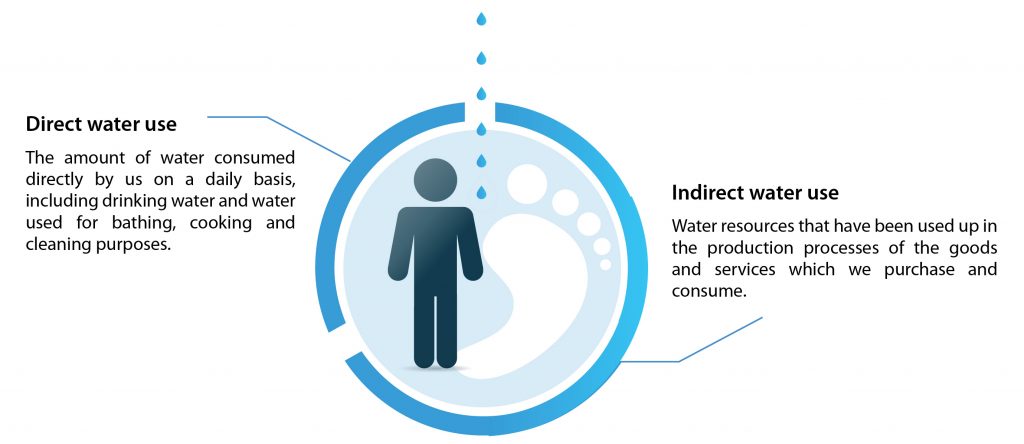Water Footprint is an innovative concept that helps us understand how our day-to-day consumption decisions have far reaching impacts on precious freshwater resources. This concept helps us visualize and understand the many connections between our buying habits and our world’s shrinking freshwater bodies.
Developing a localised version of the internationally recognised concept of Water Footprint will help raise the public awareness of the many hidden connections between their consumption habits and distant freshwater bodies. Informed by this new understanding, one can then take personal and collective actions to reduce the size of Water Footprint, and thus the extent of its impacts, to contribute to water sustainability goals.
What is Water Footprint?
Water Footprint is an indicator of water use. It measures both direct and indirect water use. Direct water use refers to the amount of water consumed directly by us on a daily basis. Indirect water use refers to water resources that have been used up in the production processes of the commodities we purchase and consume.

Virtual water
The basic building block of Water Footprint is the concept of virtual water, which is the total amount of water used up to produce agricultural produce and other commodities. This water is said to be virtual – because it is used up in the various stages of the production process and is no longer contained in the final product. By revealing this “hidden” water, the Water Footprint concept enhances our understanding of the many connections between our consumption habits and freshwater resources.
Components of Water Footprint
Water Footprint is a multidimensional indicator. In addition to presenting the virtual water content of a product, it also tells us the composition of a product’s Water Footprint in regard to the types of water consumed in the production process, as well as the spatial and temporal dimensions of that consumption.
Water Footprint captures the total amount of water used up in the various stages of a production process of a commodity. The three components of Water Footprint – green, blue, and grey – delineate the source of water used. Green Water Footprint is water brought onto the production sites by rain and other types of precipitation, and consumed through evapotranspiration or becoming part of the plants. Blue Water Footprint refers to water sourced from surface water bodies, such as rivers and lakes as well as groundwater aquifers. For example, river water is extracted to irrigate farmlands. Grey Water Footprint is the amount of freshwater required to dilute pollution arising from the production process, and return water quality to ambient standards. Blue and Green Water Footprint are consumptive water use while Grey Water Footprint is an indicator of the degree of freshwater pollution. In a nutshell, Water Footprint is a volumetric measure of both water consumption and pollution.


Green Water Footprint
Amount of rainwater used up in the production process


Blue Water Footprint
Amount of surface water and groundwater used up in the production process


Grey Water Footprint
Amount of freshwater needed to dilute pollution drained from the production process




